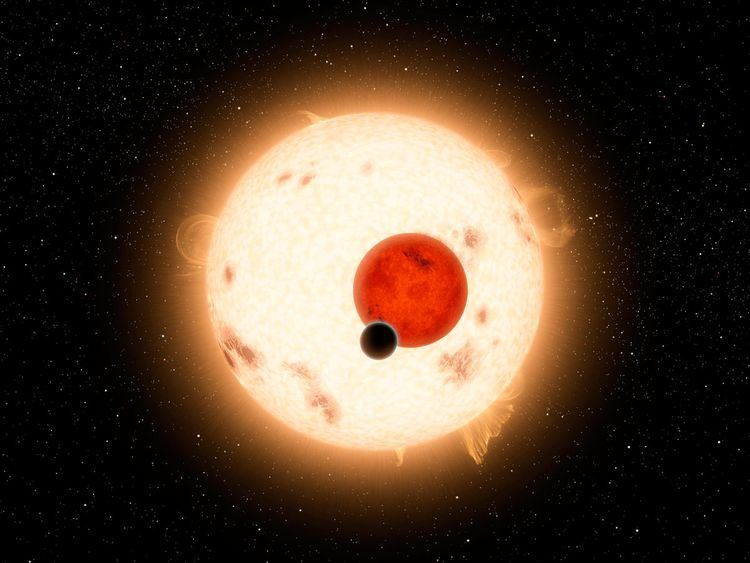Primary Kepler-16A Luminosity ~0.0057 L☉ | Companion Kepler-16B Magnitude 12 Apparent magnitude (V) 12 | |
 | ||
Similar Kepler‑47, Kepler‑22, Kepler‑11, Kepler‑17, Kepler‑36 | ||
Kepler-16 is a binary star system in the constellation of Cygnus that was targeted by the Kepler spacecraft. Both stars are smaller than the Sun; the primary, Kepler-16A, is a K-type main-sequence star and the secondary, Kepler-16B, is an M-type red dwarf. They are separated by 0.22 AU, and complete an orbit around a common center of mass every 41 days.
Contents
The system is host to one known extrasolar planet in circumbinary orbit: the Saturn-sized Kepler-16b.
Nasa s kepler mission discovers kepler 16b a planet orbiting two suns
Planetary system
Kepler-16b is a gas giant that orbits the two stars in the Kepler-16 system. The planet is a third of Jupiter's mass and slightly smaller than Saturn at 0.7538 Jupiter radii, but is more dense. Kepler-16b completes a nearly circular orbit every 228.776 days.
References
Kepler-16 Wikipedia(Text) CC BY-SA
